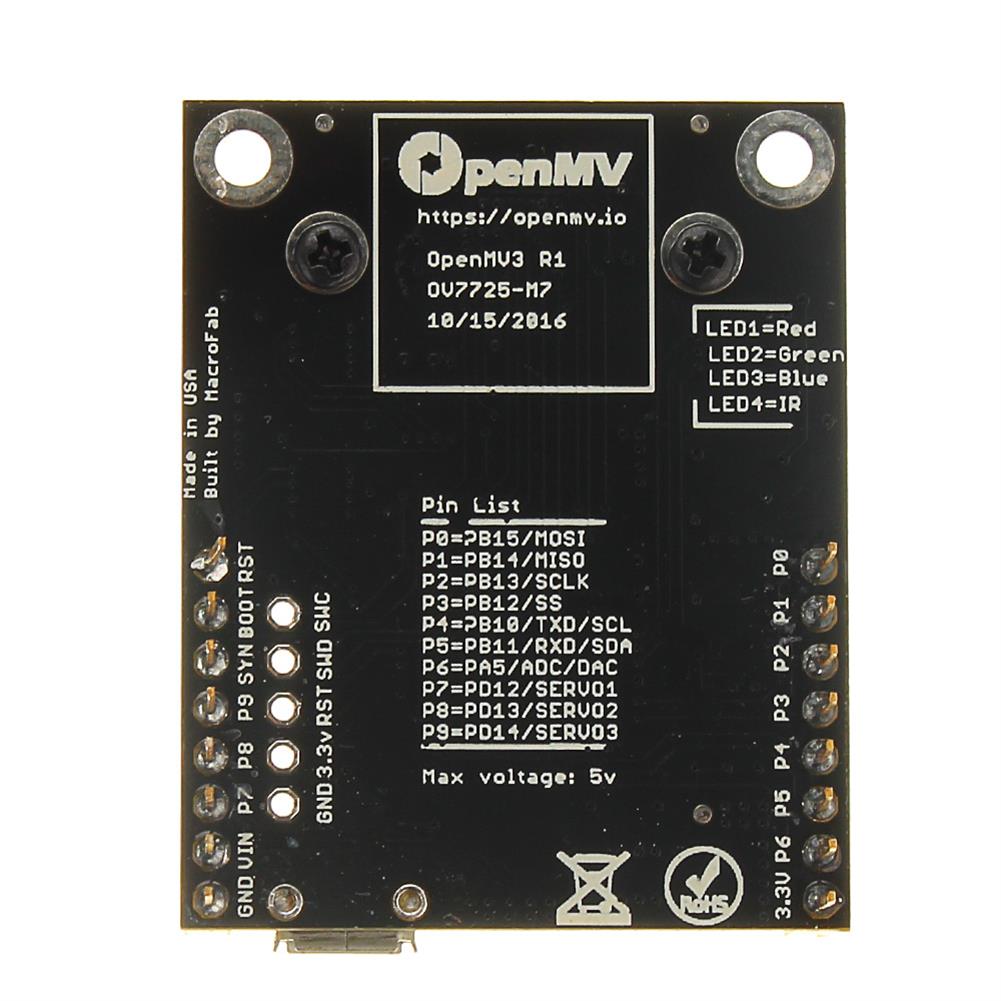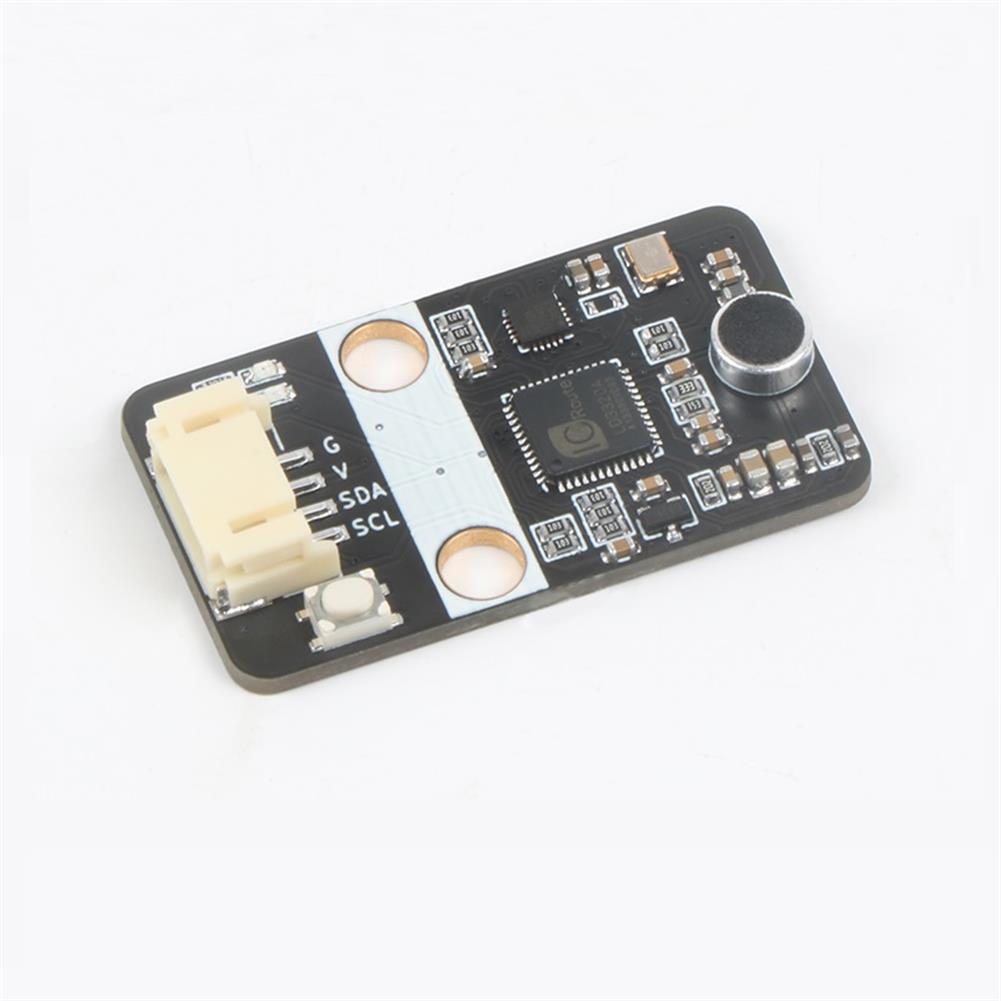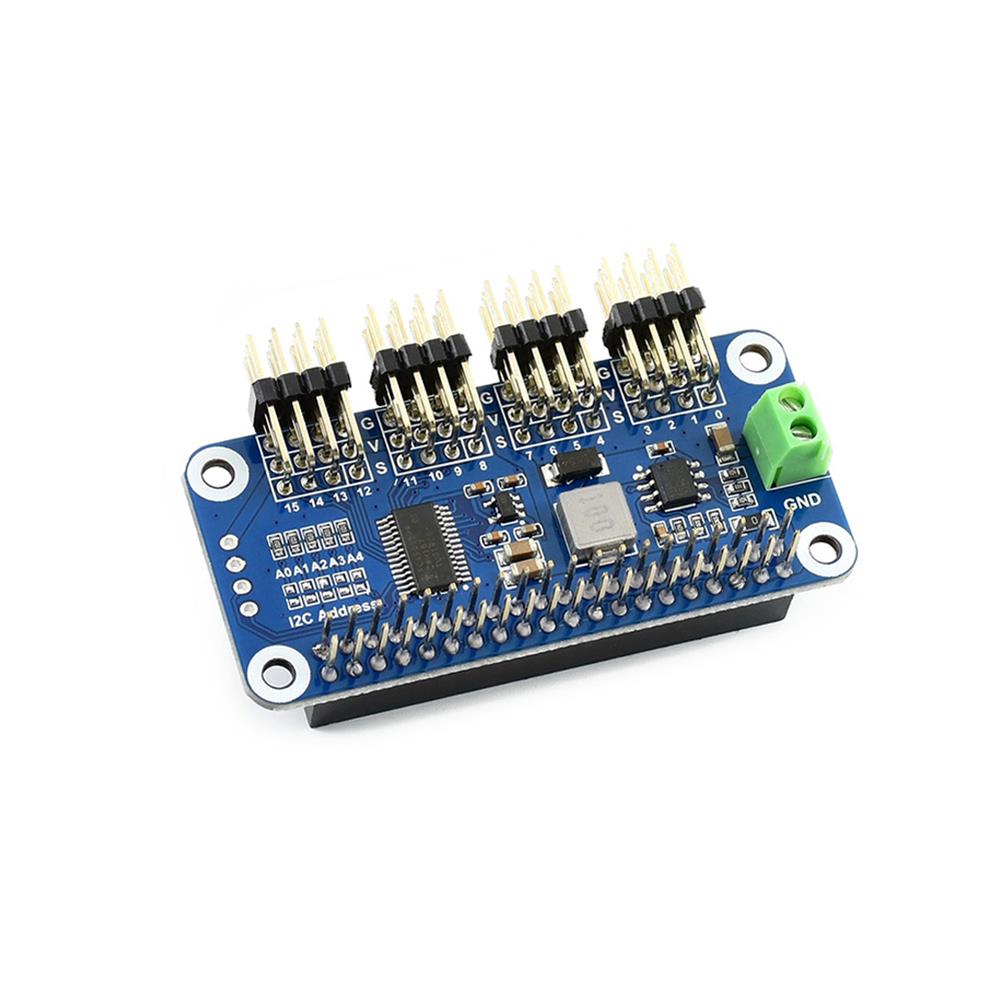 CJMCU-1808 PCM1808 Single-ended input 99dB SNR Stereo ADC Module Analog input Decoder 24bit Amplifier Board
$10.92
CJMCU-1808 PCM1808 Single-ended input 99dB SNR Stereo ADC Module Analog input Decoder 24bit Amplifier Board
$10.92
 5pcs GY-8511 ML8511 UVB Rays Sensor Breakout Test Module UV Tester Analog Voltage Output Module
$44.96
5pcs GY-8511 ML8511 UVB Rays Sensor Breakout Test Module UV Tester Analog Voltage Output Module
$44.96
Geekcreit OpenMV3 Cam M7 Smart Camera Image Processing Color Recognition Sensor Module Visual inspection Line
$87.47
Description
The OpenMV Cam is a small, low power, microcontroller board which allows you to easily implement applications using machine vision in the real-world. You program the OpenMV Cam in high level Python scripts (courtesy of the MicroPython Operating System) instead of C/C++. This makes it easier to deal with the complex outputs of machine vision algorithms and working with high level data structures. But, you still have total control over your OpenMV Cam and its I/O pins in Python. You can easily trigger taking pictures and video on external events or execute machine vision algorithms to figure out how to control your I/O pins.
OpenMV official website:https://openmv.io/
OpenMV information:https://pan.baidu.com/s/1jIkQgp4
OpenMV to get started video:https://pan.baidu.com/s/1eR7cE22
The OpenMV Cam features
The STM32F765VI ARM Cortex M7 processor running at 216 MHz with 512KB of RAM and 2 MB of flash. All I/O pins output 3.3V and are 5V tolerant. The processor has the following I/O interfaces
– A full speed USB (12Mbs) interface to your computer. Your OpenMV Cam will appear as a Virtual COM Port and a USB Flash Drive when plugged in.
– A USD Card socket capable of 100Mbs reads/writes which allows your OpenMV Cam to record video and easy pull machine vision assets off of the SD card.
– A SPI bus that can run up to 54Mbs allowing you to easily stream image data off the system to either the LCD Shield, the WiFi Shield, or another microcontroller.
– An I2C Bus, CAN Bus, and an Asynchronous Serial Bus (TX/RX) for interfacing with other microcontrollers and sensors.
– A 12-bit ADC and a 12-bit DAC.
– Three I/O pins for servo control.
– Interrupts and PWM on all I/O pins (there are 10 I/O pins on the board).
– And, an RGB LED and two high power 850nm IR LEDs.
– The OV7725 image sensor is capable of taking 640×480 8-bit Grayscale images or 320×240 16-bit RGB565 images at 30 FPS. Your OpenMV Cam comes with a 2.8mm lens on a standard M12 lens mount. If you want to use more specialized lenses with your OpenMV Cam you can easily buy and attach them yourself.
– For more information about the OpenMV Cam please see our documentation.
Applications
The OpenMV Cam can be used for the following things currently (more in the future)
Frame Differencing
You can use Frame Differencing on your OpenMV Cam to detect motion in a scene by looking at what’s changed. Frame Differencing allows you to use your OpenMV Cam for security applications.
Color Tracking
You can use your OpenMV Cam to detect up to 32 colors at a time in an image (realistically you’d never want to find more than 4) and each color can have any number of distinct blobs. Your OpenMV Cam will then tell you the position, size, centroid, and orientation of each blob. Using color tracking your OpenMV Cam can be programmed to do things like tracking the sun, line following, target tracking, and much, much, more.
Marker Tracking
You can use your OpenMV Cam to detect groups of colors instead of independent colors. This allows you to create color makers (2 or more color tags) which can be put on objects allowing your OpenMV Cam to understand what the tagged objects are.
Face Detection
You can detect Faces with your OpenMV Cam (or any generic object). Your OpenMV Cam can process Haar Cascades to do generic object detection and comes with a built-in Frontal Face Cascade and Eye Haar Cascade to detect faces and eyes.
Eye Tracking
You can use Eye Tracking with your OpenMV Cam to detect someone’s gaze. You can then, for example, use that to control a robot. Eye Tracking detects where the pupil is looking versus detecting if there’s an eye in the image.
Optical Flow
You can use Optical Flow to detect translation of what your OpenMV Cam is looking at. For example, you can use Optical Flow on a quad-copter to determine how stable it is in the air.
QR Code Detection/Decoding
You can use the OpenMV Cam to read QR Codes in it’s field of view. With QR Code Detection/Decoding you can make smart robots which can read labels in the environment.
AprilTag Tracking
Even better than QR Codes above, the OpenMV Cam M7 can also track AprilTags at 160×120 at up to about 12 FPS. AprilTags are rotation, scale, shear, and lighting invariant state-of-the-art fidicual markers.
Edge/Line Detection
You can preform edge detection via either the Canny Edge Detector algorithm or simple high-pass filtering followed by thresholding. After you have a binary image you can then use the Hough Detector to find all the lines in the image. With edge/line detection you can use your OpenMV Cam to easily detect the orientation of objects.
Template Matching
You can use template matching with your OpenMV Cam to detect when a translated pre-saved image is in view. For example, template matching can be used to find fiducials on a PCB or read known digits on a display.
Image Capture
You can use the OpenMV Cam to capture up to 320×240 RGB565 (or 640×480 Grayscale) BMP/JPG/PPM/PGM images. You directly control how images are captured in your Python script. Best of all, you can preform machine vision functions and/or draw on frames before saving them.
Video Recording
You can use the OpenMV Cam to record up to 320×240 RGB565 (or 640×480 Grayscale) MJPEG video or GIF images. You directly control how each frame of video is recorded in your Python script and have total control on how video recording starts and finishes. And, like capturing images, you can preform machine vision functions and/or draw on video frames before saving them.
Finally, all the above features can be mixed and matched in your own custom application along with I/O pin control to talk to the real world.
Package included
1 x OpenMV3 Cam M7 Kit(as showed)
Additional information
| Weight | 0.051 kg |
|---|















Reviews